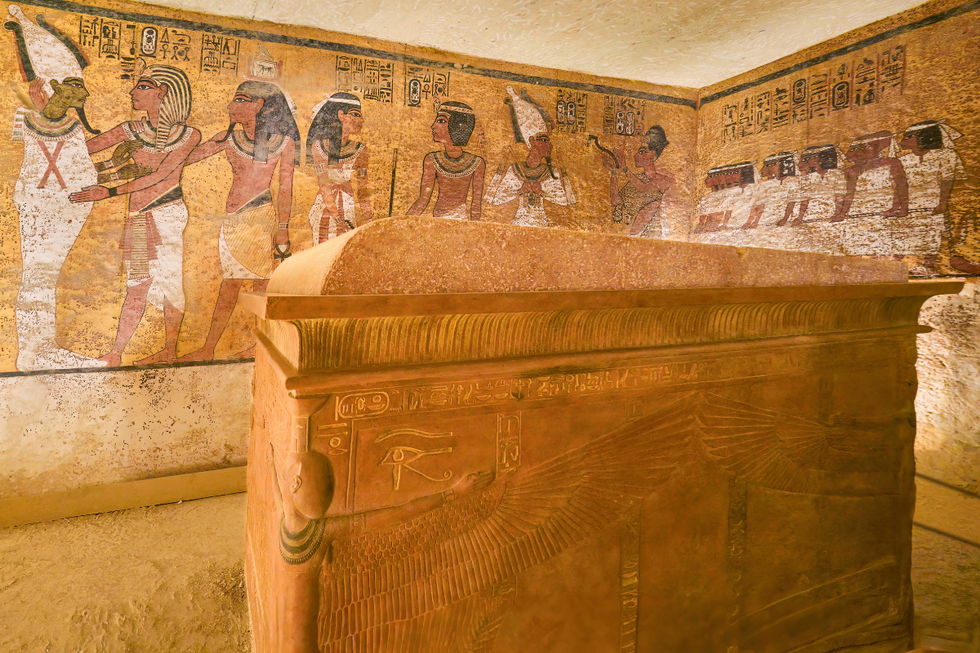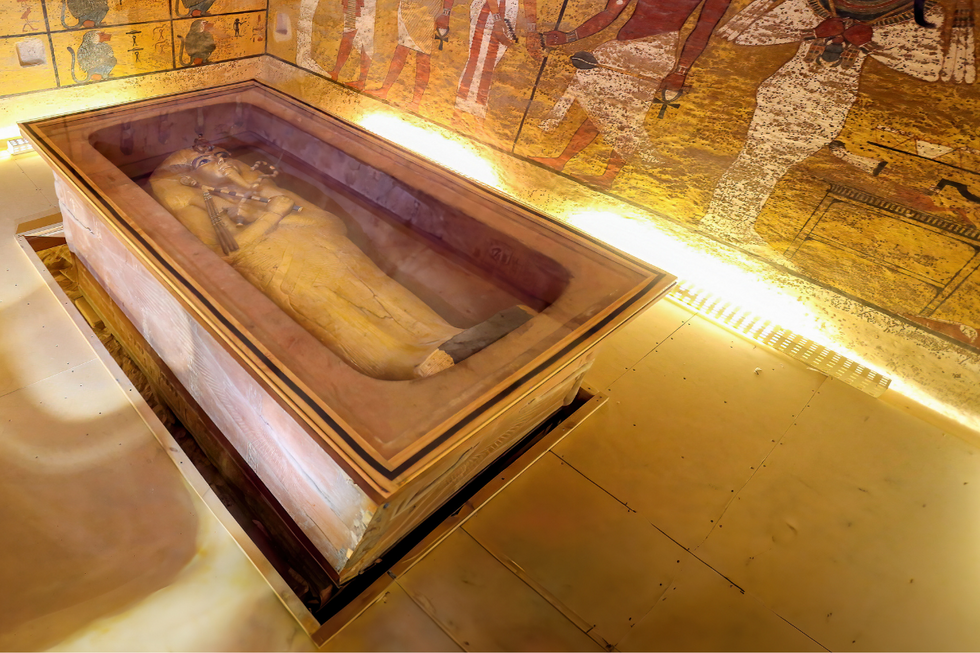The young king suffered from several debilitating conditions throughout his short life
Don't Miss
Most Read
Trending on GB News
Scientists have made a monumental breakthrough in solving the century-old mystery surrounding King Tutankhamun's death.
The findings, revealed in a study conducted by researchers from the National Research Centre in Cairo along with two German DNA specialists, reveal crucial insights into what killed the famous pharaoh more than 3,300 years ago.
The latest DNA analysis has indicated that the boy king likely died from repeated bouts of malaria combined with health issues caused by inbreeding.
General manager of the Tutankhamun Exhibition Tim Batty dubbed the discovery "another piece of the great jigsaw surrounding the life and death of Tutankhamun".

Scientists have made a monumental breakthrough in solving the century-old mystery surrounding King Tutankhamun's death
GETTY
The analysis also identified King Tut's grandparents as the pharaoh Amenhotep III and his queen Tiye - both of whom also died with malaria, a mosquito-borne illness that was fatal during ancient civilisations.
"The tests show that Tutankhamun was infected with malaria that may have killed him," Batty said in January.
The scientific analysis was conducted using tissue samples taken from several mummified remains in 2000, after which researchers found genetic evidence suggesting repeated malaria infections contributed significantly to the pharaoh's death.
"The malaria just adds to the many possible causes of his death," Batty noted.
The study also revealed King Tut was likely the son of the anonymous mummy in tomb KV55 in the Valley of the Kings, with his mother possibly buried in tomb KV35 - although his parentage has remained up for archaeological debate.
LATEST ARCHAEOLOGICAL BREAKTHROUGHS:
King Tut ruled Egypt for only nine years before his death at just 18 years old but - despite the brevity of his reign - he remains one of the most renowned pharaohs in history, largely due to the sensational discovery of his tomb in 1922.
That excavation, conducted by British archaeologist Howard Carter, unearthed the boy king's nearly intact remains along with more than 5,000 artefacts.
The difficulty of identification stems from deterioration of the remains over time and the mummification process itself, which involves removing all organs except for the heart.
In the young king's case, scientific study has provided unprecedented insights into the medical conditions that plagued the young pharaoh during his fleeting life.
A separate DNA analysis concluded that the boy king was a product of inbreeding, which likely contributed to his health problems and short lifespan.

That excavation, conducted by British archaeologist Howard Carter, unearthed the boy king's nearly intact remains along with more than 5,000 artefacts
GETTY
Originally published in 2010 in the Journal of the American Medical Association, the findings revealed that King Tut's parents were siblings.
"They turned out that they're brother and sister, which was a big surprise for us. A lot of incest happened... they didn't like to let royal and non-royal blood mix, so they tried to keep it within the royal family," said study co-author and geneticist Yehia Gad.
Researchers diagnosed several pathologies in Tutankhamun, including Köhler disease II, a rare bone disorder that restricts blood flow to foot bones as CT scans confirmed necrosis of the left foot, and several walking canes were found in his tomb.
The combined impact of necrosis and malaria infections is now considered the most likely cause of death.








